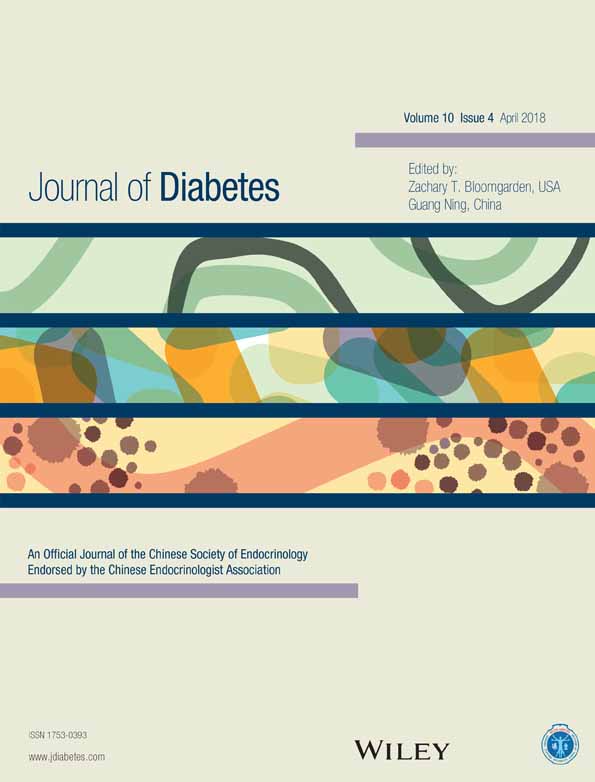Performance of non-traditional hyperglycemia biomarkers by chronic kidney disease status in older adults with diabetes: Results from the Atherosclerosis Risk in Communities Study
在老年糖尿病患者慢性肾脏疾病状态下非传统高血糖生物标志物的检测效能:来自评估动脉粥样硬化风险社区研究的结果
Abstract
enBackground
In people with chronic kidney disease (CKD), HbA1c may be a problematic measure of glycemic control. Glycated albumin and fructosamine have been proposed as better markers of hyperglycemia in CKD. In the present study we investigated associations of HbA1c, glycated albumin, and fructosamine with fasting glucose by CKD categories.
Methods
A cross-sectional analysis was performed of 1665 Atherosclerosis Risk in Communities Study participants with diagnosed diabetes aged ≥65 years. Spearman's rank correlations (r) were compared and Deming regression was used to obtain root mean square errors (RMSEs) for the associations across CKD categories defined using estimated glomerular filtration rate and urine albumin:creatinine ratio.
Results
Correlations of HbA1c, glycated albumin, and fructosamine with fasting glucose were lowest in people with severe CKD (HbA1c r = 0.52, RMSE = 0.91; glycated albumin r = 0.39, RMSE = 1.89; fructosamine r = 0.41, RMSE = 1.87) and very severe CKD (r = 0.48 and RMSE = 1.01 for HbA1c; r = 0.36 and RMSE = 2.14 for glycated albumin; r = 0.36 and RMSE = 2.22 for fructosamine). Associations of glycated albumin and fructosamine with HbA1c were relatively similar across CKD categories.
Conclusions
In older adults with severe or very severe CKD, HbA1c, glycated albumin, and fructosamine were not highly correlated with fasting glucose. The results suggest there may be no particular advantage of glycated albumin or fructosamine over HbA1c for monitoring glycemic control in CKD.
摘要
zh背景
在合并慢性肾脏疾病(chronic kidney disease,CKD)的患者中, 用HbA1c衡量血糖控制情况可能有些问题。既往已经有人提出了对于CKD患者来说糖化血清白蛋白与果糖胺可能是更好的高血糖标志物。在当前的这项研究中我们按照CKD类别调查了HbA1c、糖化白蛋白以及果糖胺与空腹血糖之间的关系。
方法
这是一项横断面的分析, 纳入的1665名诊断为糖尿病并且年龄≥ 65岁的参与者来自于评估动脉粥样硬化风险的社区研究。使用估算的肾小球滤过率以及尿白蛋白:肌酐比值来定义CKD类别, 在各个CKD类别中比较了Spearman等级相关系数(r), 并且使用Deming回归法得到了相关的均方根误差(root mean square errors,RMSEs)。
结果
HbA1c、糖化白蛋白以及果糖胺与空腹血糖之间的相关性在严重CKD(HbA1c:r = 0.52,RMSE = 0.91;糖化白蛋白:r = 0.39,RMSE = 1.89;果糖胺:r = 0.41,RMSE = 1.87)以及非常严重的CKD(HbA1c:r = 0.48,RMSE = 1.01;糖化白蛋白:r = 0.36,RMSE = 2.14;果糖胺:r = 0.36,RMSE = 2.22)患者中都是最低的。在各个CKD类别中糖化白蛋白以及果糖胺与HbA1c之间的关系相对来说都相似。
结论
在合并严重或者非常严重CKD的老年患者中,HbA1c、糖化白蛋白以及果糖胺与空腹血糖之间并不是高度相关的。这些结果表明在监测CKD患者血糖控制情况时使用糖化白蛋白与果糖胺并不会特别优于HbA1c。




